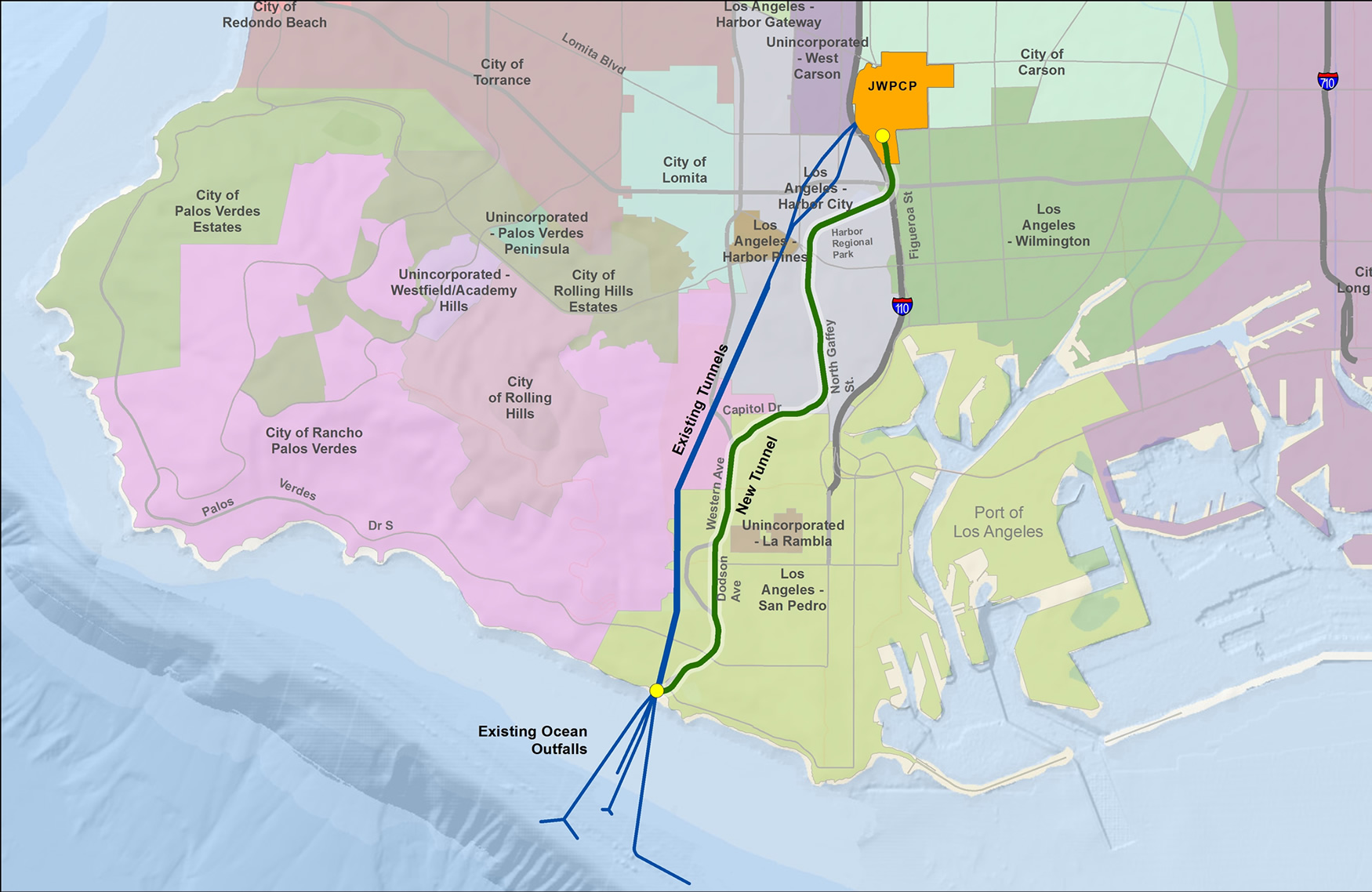
PROJECT OVERVIEW
Joint Water Pollution Control Plant
The Sanitation Districts operate and maintain the Joint Outfall System (JOS), the main sewer system that collects and treats the wastewater (sewage) from over 5 million people in the Los Angeles basin. The largest wastewater treatment facility in the JOS, the A.K. Warren Water Resource Facility (formerly known as the Joint Water Pollution Control Plant or JWPCP) in Carson, uses two large tunnels to convey water to the ocean. The tunnels are 60 and 80 years old.
A multi-year planning and environmental review effort began in 2006 and identified the need for a new tunnel to ensure the reliability of the JOS and provide sufficient future capacity. A new tunnel will address the following concerns with the existing tunnels:
Aging infrastructure concerns – The existing tunnels, which were built in 1937 and 1958, have never been taken out of service because they must continuously carry flow.
Earthquake concerns – The existing tunnels are not built to modern earthquake standards, even though they cross two earthquake faults.
Overflow concerns – The capacity of the existing tunnels was almost exceeded twice during major rainstorms, including the rainstorms in January 2017 and February 2024. If the combined tunnel capacity is exceeded, partially treated or untreated wastewater would be discharged to surrounding waterways, resulting in poor water quality.
In 2012, the Sanitation Districts' Board of Directors approved the Clearwater Project Master Facilities Plan, which will protect local waterways by addressing oru aging infrastructure. A major component of this project is a new 7-mile long tunnel that is constructed underneath public right-of-way (streets). The graphic below shows the pathway of the new and existing tunnels.

Following approval of the Clearwater Project in 2012, the Sanitation Districts hired Parsons Corporation and McMillen Jacobs Associates, engineering firms with tunneling expertise, to assist with the tunnel design. To support the design process, Fugro Consultants Inc., a geotechnical firm, was hired to assist in the evaluation of the geology along the tunnel alignment. Geological data was obtained by taking soil samples (borings) deep below streets and other public right-of-ways. Between 2012 and 2018, the Sanitation Districts focused on designing the new tunnel and obtaining the necessary easements and permits for construction.
Construction for the Clearwater Project began in 2019 in Carson and is expected to finish in 2027 at Royal Palms Beach.
The project began at the Warren Facility with the construction of an access shaft. This shaft is used throughout the project as the entry/exit point for construction workers, tunnel materials (e.g., liner segments and excavates soil), and equipment. A noise barrier, approximately 20 feet high, is erected between the site and nearby sensitive receptors.
At Royal Palms Beach, the new tunnel will connect to the existing ocean outfalls. All construction work occurs Monday through Friday. Once construction is completed, the site will be returned to pre-construction conditions. Some parking spaces are unavailable during construction, but the beach and portions of the parking lot are accessible at all times.
The Clearwater Project will create local jobs and provide indirect positive impacts on the local economy through the employment of subcontractors, suppliers, and professional services. At least 30 percent of the craft labor will be performed by local residents and veterans.